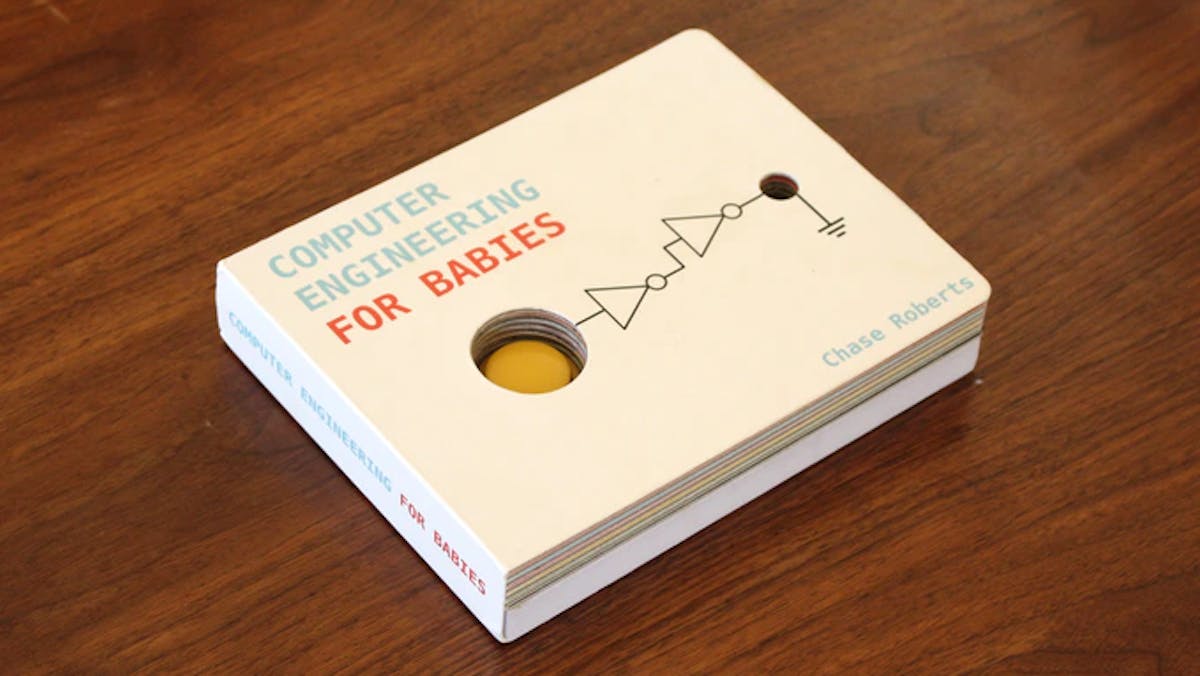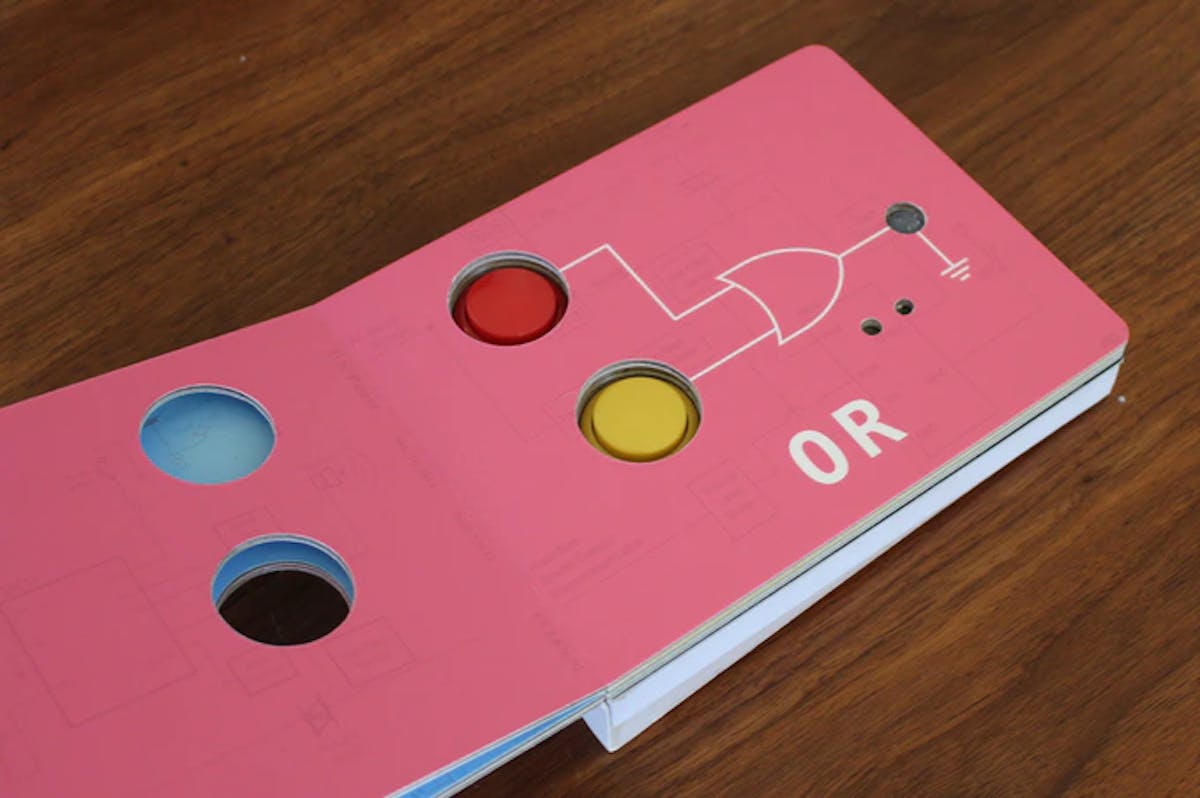Computer Engineering for Babies Teaches Your Little One Logic Concepts — Using Functional Circuits
This board book hides a surprising secret: functional logic circuits that are reconfigured every time you turn the page.

Computer engineer Chase Roberts believes there's a distinct lack of baby-focused board book literature in the field, and so has taken matters into his own hands to gently encourage his son to follow in his footsteps: building an interactive book of logic circuits called Computer Engineering for Babies.
"Around 5 years ago, when my boy Frank was still a baby, I noticed his fascination with buttons, switches, and levers," Roberts explains. "Often he would have me hold him next to a light switch just so he could toggle it off, jerk his head around to confirm that the bulb had indeed turned off, and whirl back around again come back around to turn to toggle the switch back on. Over and over again. He was so fascinated by the cause and effect of a switch and a light bulb."
"At around the same time, I had an incredibly hard time keeping him quietly entertained during church meetings, and I fell in love with the idea of a simple book with buttons and lights. Computer Engineering for Babies is designed to be (quietly) entertaining while helping build basic intuition for simple digital logic concepts."
Like most board books, Computer Engineering for Babies is bold and bright. The thick card pages turn to reveal simple schematic diagrams for a series of logic circuits — and holes cut through provide little fingers with access buttons, starting with a simple switch for an LED.

There's a surprising amount of logic hidden in the book itself, too: The circuits are functional, with the book reconfiguring how the buttons work according to the page the reader is on. The book walks through the most common logic gates before introducing something a little more complex: A latch circuit, reconfiguring the two buttons to act as set and reset inputs.
"I've gone through at least eight different prototypes," Roberts says, "and redesigned the circuit board at least five times to get it to where it is today. I wanted this book to be super user friendly."
"Some might think it's a stupid detail, but I spent months just finding the right arcade style button with the perfect click when pressed. For a time, I was even considering injection molding my own custom buttons just to make sure I got it right. But I eventually found a button that's low profile to fit, easy to press, and has great tactical feel."
The book is currently funding on Kickstarter, with physical rewards starting at $27 for a single copy — which should last around a year before its user-replaceable battery runs out, Roberts notes.
Freelance journalist, technical author, hacker, tinkerer, erstwhile sysadmin. For hire: freelance@halfacree.co.uk.

